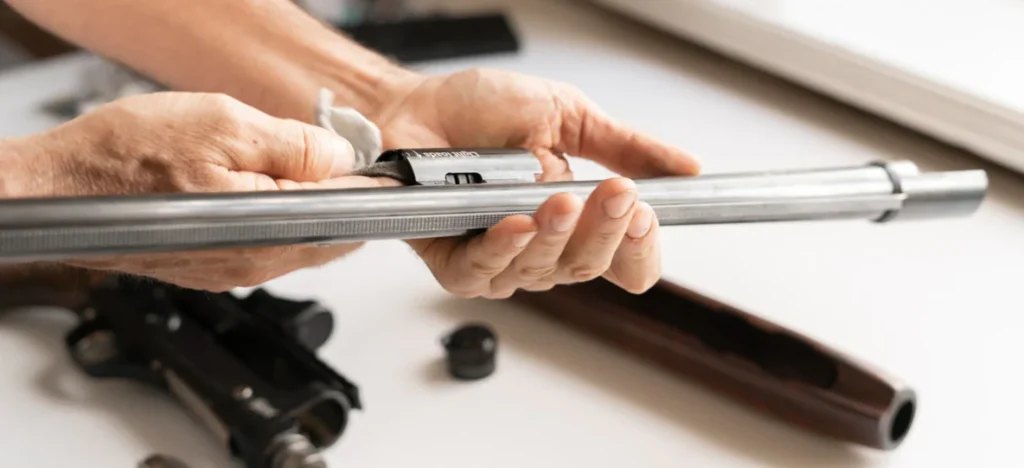What a year 2020 is turning out to be! What was being called the Year of Vision and the Year of Clarity has turned into the Year of the Coronavirus….
With all of the changes that are happening due to this virus…it’s becoming more and more difficult to get out to the range and shoot. As a matter of fact, I’m seeing more and more notices of matches being either rescheduled or cancelled. Who would have thought that a term called “Social Distancing” would be used as something that would keep people from shooting matches or competing?
To me, a term like Social Distancing sounds like a funny way to refer to shooting long range…not staying at least 6 feet away from other people…
With all of these changes, it would be very easy to become frustrated, bored or worse…depressed. Most of us are looking for ways to get our Rimfire Fix…
As shooters, we tend to be an outgoing bunch…many of us are hunters and we’re accustomed to coming and going as we want, either to work or to shoot, hunt etc… Being forced to shelter in place and not be allowed to go about our daily schedules can be stressful to say the least!
Shooting is a sport of repetition. While some people are more naturally talented or gifted when it comes to shooting, technique and fundamentals are learned and honed over time…and lots and lots of practice. If you’re not allowed to go to the range to practice or compete…those skills can diminish over time.
With that being said, let’s talk about things you can do to pass the time… Here are 5 things you can do to pass the time and get your Rimfire Fix!
- Dry Fire
To prevent those skills from diminishing, one of the most useful things you can do is to Dry Fire. The first thing to do before dry firing, is to confirm the chamber is clear and if you’re using a snap cap, that it is in place.
Contrary to popular belief, it is safe to Dry Fire rimfire rifles and handguns. Many modern rimfires are designed to be dry fired without even needing a snap cap. For older rimfires, it is very important that you use a snap cap. Using a snap cap will prevent you from accidentally allowing the firing pin to make contact with the mouth of the chamber, damaging the chamber.
When dry firing, you can practice lots of different positions. As an example, you can visit the NRL22 website https://nrl22.org and visit the Downloads page. Here, you can see all of the past Courses of Fire. Looking at these, you can see what props are used each month for each stage.
Common props include:
- A step ladder
- A saw horse
- A 5 gallon bucket
- A 2 gallon bucket
- A chair
- A tire
- A tank trap
- A 55 gallon drum or barrel
- Cinder blocks
Many of these are common household items, the type of things that you probably have in your basement or garage. By utilizing the items you have, you can set them up in your basement, garage, kitchen or anywhere else. Doing this, you can practice getting into position, moving from one position to another etc…
Recently, I was able to practice dry firing for about 30 minutes a day for 3 or 4 days before a match. The dry firing helped me find flaws in my technique and find a better process for one of the stages where you have to transition from shooting weak side to strong side and alternating each shot. I don’t routinely practice shooting left-handed ( weak side for me ) so the dry firing helped me get comfortable getting into position and finding a smooth trigger pull with my left hand.
If you need any additional reasons to dry fire, just follow any of the top NRL22 shooters, as well as any other shooters and ask if they dry fire. Many dry fire daily and several are on record as dry firing tens of thousands of times each year.
One important thing to remember when dry firing though, is to focus on each shot, don’t just pull the trigger. Pick a spot on a wall, or place a target on the wall, and then go through the entire sequence. Set a timer on your phone and at the beep, get into position, looking through the scope at the target and focus on the process. Breathe, aim, squeeze and follow through.
- Check for Loose Screws
Check your mounts, action screws, sling studs and any other items that could have worked loose during matches, practice or day to day activities. More than once, I’ve seen shooters show up to a match with loose mounts or scope rings. They didn’t realize the mounts or rings were loose until they weren’t able to hit their targets consistently.
- Clean Your Guns
Cleaning Rimfires is a controversial subject and one that hundreds of articles have been written over the years, both in favor of it and against it… I’ll leave it to you to decide if part of your cleaning regimen should be to clean the chamber and barrel, but you can definitely clean the rest of your rifle or handgun. Often, it’s too easy to come in from the range or a match and put your Rimfire away without wiping it down.
Making sure to oil the barrel, bolt and action can prevent rust and corrosion. This can be important even if you weren’t shooting in wet weather conditions. Often, an inadvertent hand on the barrel, action or bottom metal and trigger guard, can lead to rust due to sweat on your hands. Applying an oil or other protectant can prevent rust from the salt in your sweat.
- Level Your Scopes
I know what you’re saying… “I’m not touching my scopes once the rifle is zeroed!” I understand, but hear me out by answering this question… Have you ever zeroed your rifle and then, as you dial elevation, you notice the bullet impact at the right elevation, but the impact is slightly left or right of where you were aiming? If the answer is No, then you can skip this step. If the answer is Yes, read on!
As you know, there are lots of things that can cause an impact to be off target. Just a few of the common causes are:
- The scope isn’t tracking correctly
- Mirage is causing an issue
- Wind is moving the bullet / missed wind call
- Poor trigger control or technique
Another cause that is often missed however, is when the scope isn’t completely level to the action. If the scope is not level, you will experience cant in the reticle. That cant is magnified as you dial elevation. A few degrees of cant can move your impact enough to create doubt in your scope’s tracking ability.
You can check cant several ways, with the aid of leveling tools…or you can use a simple plumb bob to make sure everything is level. Regardless of how you check it, making sure your scope is level will save you a lot of time and ammo. Time and ammo are both money… Use your time at home to save time, ammo and money when you’re able to get back to shooting.
- Sort Ammo
I left this item for last, because there are as many theories on sorting Rimfire ammo as there are theories on Area 51, the Kennedy Assassination and Who Shot JR Ewing on Dallas! The reason there are so many theories is because there are so many ways you can sort Rimfire ammo. Before we talk about the ways to sort, let’s talk about why someone would want to sort.
One of the many things that can make Rimfire’s both fun and frustrating, is that for the most part, we’re stuck shooting factory ammunition. While it is possible to hand load Rimfire ammo, it’s not very popular most people aren’t even aware it’s an option. When it comes to shooting factory ammo, the reality is that each rifle and handgun will have certain brands and lots of ammo that shoot better than others.
Often times, Rimfire ammunition labeled as Match ammo, which is usually higher priced than standard ammunition, will produce much better groups than the cheaper standard or bulk ammunition. The reason the Match ammo is more accurate is because you’re paying for better consistency from round to round. Consistency from round to round is what leads to smaller groups.
Many shooters report that they can replicate the groups their Rimfire’s achieve with match ammo, by sorting standard or bulk ammo. Rimfire ammunition is commonly sorted in 3 ways:
- Weight of the loaded round
- Mic the bullets for consistency
- Overall length of the loaded round
- Measuring rim thickness
Rimfire ammunition will often vary in weight for a few reasons, even in such a small sample as one 50 round box. Weight variances can be caused by the case being thicker or thinner on some rounds than others. Thicker cases may not fit into the chamber as well, while thinner cases may be a little loose. Both can cause issues with pressure and resulting velocity increases or decreases.
Weight variances can also be caused by some rounds having more…or less powder than other rounds. Rimfire ammunition is produced in batches or lots of tens of thousands of rounds, so it’s understandable that occasionally a round will get a little more powder or a little less. More powder means a higher velocity while less powder means a lower velocity. In either case, one round with a different velocity, even if it’s only 15 or 20 feet per second, can wreck a “refrigerator” 5 shot group.
Weight can be affected by inconsistency of the bullets in each round. I’ve seen loaded rounds with bullets that will spin in the case, are oval instead of round, some with flat spots on them or nearly crushed. Since the bullets are made of soft lead, it’s easy to see how they can become deformed and possibly either lose a little weight or become damaged. Both are causes for concern when shooting groups.
The final reason to sort Rimfire ammunition for weight is to ensure that the priming compound is consistent around the inside of the case. A leading cause of misfires with Rimfire’s is due to the priming compound not being applied to the entire diameter of the case. That is why you can usually take a round that misfired and rotate it, put it back into the chamber and it will fire. On your first “shot”, the firing pin hit the case in a spot where there was no priming compound. On the next shot, the case had been rotated to a point where there was priming compound in the area where the firing pin made contact, resulting in a “shot”.
Measuring for overall length will provide consistency by making sure some bullets haven’t been deformed, thus either being engraved by the rifling or not. As mentioned before, this can lead to and increase or decrease in pressure, which results in a velocity loss or gain.
There are a lot of other things you can do during this time of “shelter in place”, but these are some of the ones that can help you maintain your skills and be ready for the time when we’re all allowed to go back to the range, compete in matches and enjoy some social shooting!
Stay safe…. Stay Healthy…Wash Your Hands…Remember, We’re All In This Together!

